Num. 7 - November 2015
Tutti gli articoli
Tutti gli articoli
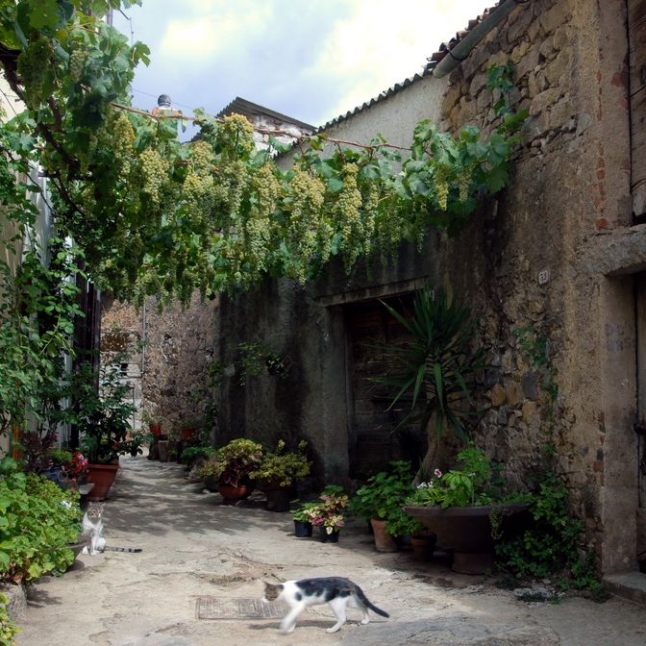
01 November 2015 The Crocks of Orani
The discovery of the evolutionary history of the Sardinian population in the Island has ever been pursued by academics for the beginnings, for the understanding and the knowledge of own origins. The finding of the “Crocks of Orani”, in 1994, is a certain evidence.
The finds, on whose nuragic nature there are no doubts, deserve a specific attention for the inscriptions that are engraved. About a possible forgery of them, people discussed for the year of the discovery, when they were shown to the archaeologist emeritus, the Professor Lilliu, during the conference about the protosardinian religiousness organized in Orani.
The counterfeit of the finds, supported by prestigious academics, is fully opposed by a parallel cultural current of likewise deserving academics who consider the four crocks of Orani as the obvious proof of a primary sample of nuragic alphabetic symbols. Indeed, one of them has some features of archaic Phoenician typology, even typical of the Stele of Nora.

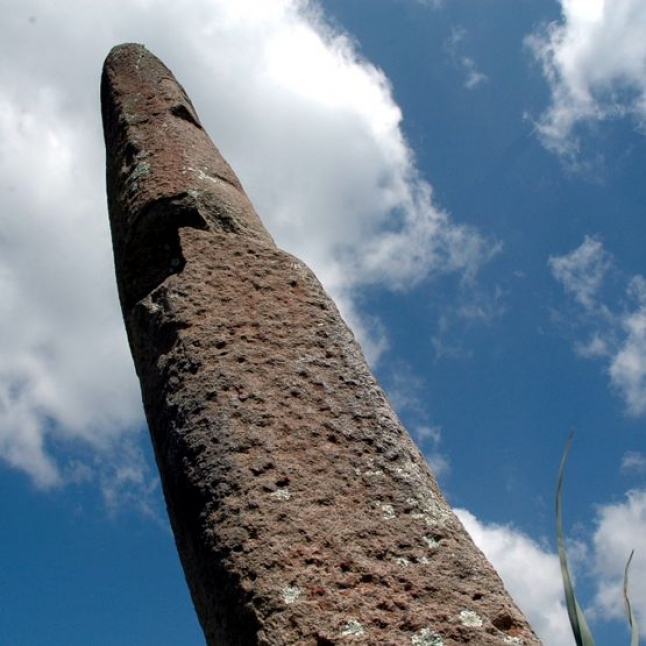
01 November 2015 The Menhirs of Sorgono
In Sardinia it is possible to spot the presence of forms of art of prenuragic cult, whose settlement seems to be facilitated by the mild weather and by the cultural temperament of our ancestors. The megalithic core of Biru’e Concas represents an exemplar proof of this and it is situated in the territory of Sorgono, in Nuoro, in the historical region of the Mandrolisai.
The site is in the small town Coa ‘e sa Mandara, a hill of about six hundred meters above the sea level delimited by the Mannu River, that is characterized by the feature of being a fertile area, full of spring water. In the beginnings, a natural environment inclined to breeding and to agriculture, that has ever been representing a crux for the communication ways, because it is situated along the natural connections that link the Gennargentu to the Campidano and Sarcidano.

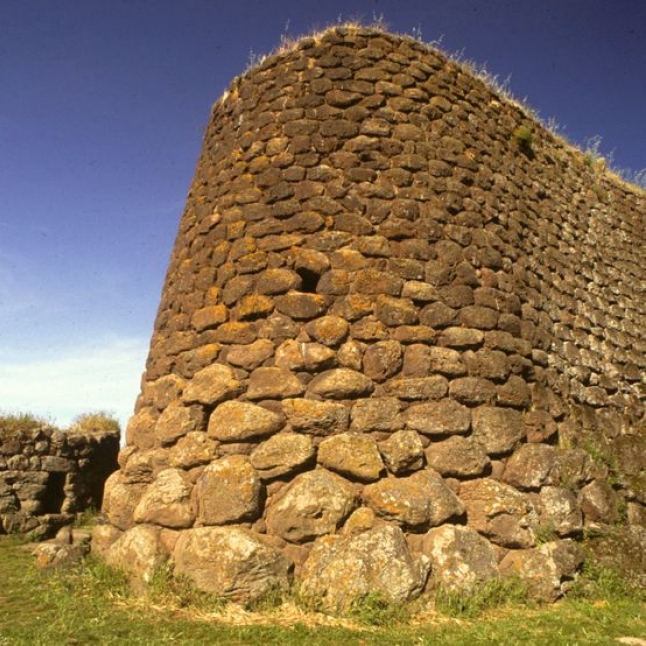
01 November 2015 The Nuraghe Losa: a wide space composed by halls and rooms
Among seven thousand nuraghes present in Sardinia, there is one for instance, in the territory of Abbasanta, that has the features of a labyrinth and of a twist of halls and rooms and that offers visitors the opportunity of penetrating into the dark of an enormous and complex location.
It is the Nuraghe Losa and it represents one of the most majestic buildings of the Bronze Age, between the Fourteenth and the Thirteenth Century Before Christ.

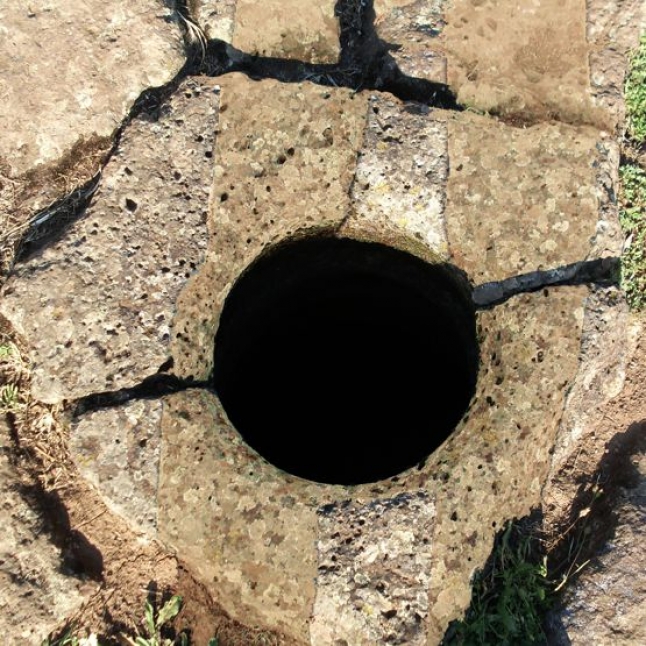
01 November 2015 The moon in the well
The Sardinian sacred wells are the places of cult that date back to the nuragic epoch. Located above all in the hinterland, such as the nuraghes, they are characterized by an excellent virtuosity in the realization. Their building is inspired exactly to nuraghes and their purpose is mainly religious.
It is useless to stress the basic value that water had for the nuragic population. It was an important element such that it was venerated and the sacred well fulfills completely also to this purpose. The best example of sacred well in Sardinia is that of Santa Cristina, in Paulilatino in the Province of Oristano, dated back to the Eleventh Century Before Christ.
In the religious viewpoint, it is evident the very strong symbolism that marked this kind of building and the most correct interpretation that can be done today is that according to which the well represents metaphorically the uterus of the "mother Earth", through the amniotic fluid reproduced exactly by water. The staircase has a double purpose.
Indeed, it represents the passage from the dark to the light through the birth and from the light to the dark through the death. But, there is something more. The sacred well of Santa Cristina is an unique architectural magnificence, a shrine that, thanks to its sizes, the technical perfection of the walls, the attention of the drawing, geometric perfections and stylish and optical qualities, does not have equals in the whole Mediterranean basin.

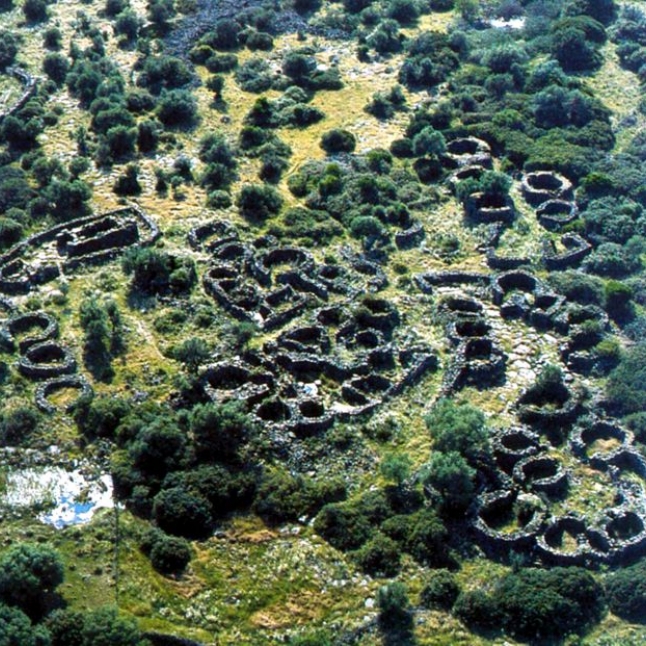
01 November 2015 The Tomb of the Giants s'Ena 'e Thomes
In Dorgali, close to the famous archaeological nuragic site of Serra Orrios stands, between the Mediterranean flora, the best preserved nuragic obelisk during the multimillenial history of Sardinia, the tomb of the giants s' Ena 'e Thomes. The magnificent location overlooking the fertile valley of the river Isalle, emphasizes the majesty of one of the most fascinating and intriguing burial structures of the Middle Ancient Bronze (1800-1600 B.C.).
The tomb of the giants s' Ena 'e Thomes is, in fact, one of the oldest of the existing ones in the island territory. It is characterized by the presence of a central stele, that is a single granite monolith more than three and a half meters tall, well-finished in the edges and with a small gateway down.

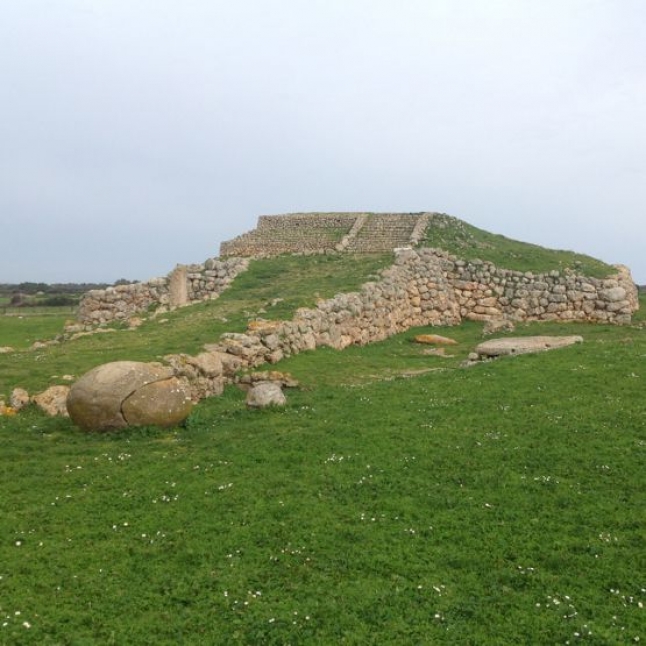
01 November 2015 The ziggurat of Monte Accoddi the most enigmatic masterpiece of the Sardinian prehistory
A ziggurat in Sardinia. How could a typical Mesopotamian monument come from hundreds of kilometers away from its place of origin and why did it come right in Sardinia?
This is one of the many questions that have not yet been answered and that probably will not hold it ever, because the mysteries surrounding the sacred altar of Monte d'Accoddi, between Sassari and Porto Torres, is really unexplainable.
A place and a monument come from a mystery that we find even in the name. And we start right from this. The name Monte d'Accoddi turns out to be, like this prodigious hill, quite mysterious.
If the word Monte (mountain) is easy to understand (in Sardinia we tend to call mountain even little hills), the interpretation of the term Accoddi, which may mean "gathering place" is more complex.
However the ancient name we may find in written texts is "Monte de Code", which meant " Mountain, hill of stones", perhaps because of the stones scattered outcrops loose, before the actual excavations, started in the 50s, under the direction of Ercole Contu.
Kodi and Kodina, in ancient Sardinian respectively mean mountain and stone. So we are facing a real "mountain stone" but also a gathering point.
Originally the monument was marked only by a ramp at the top of which was a building that was the temple itself, daubed with red ocher; today of this building remains only the floor. Probably destroyed by fire, was then built the pyramid with a new terrace and the temple was totally rebuilt.
The word ziggurat means "temple of the sun". The sanctuary of Monte d'Accoddi however, was dedicated to two moon deities, the god Narma and goddess Ningal.
Observe at a little distance the great truncated pyramid structure (36 x 29 meters, and a height of 5.40 meters), with its long trapezoidal ramp, inspires a great fascination. Take the climb slowly and observing the surrounding world from up there, a little further away from land, a little closer to the stars. Clear Mesopotamian interpretation who wanted united heaven and earth.

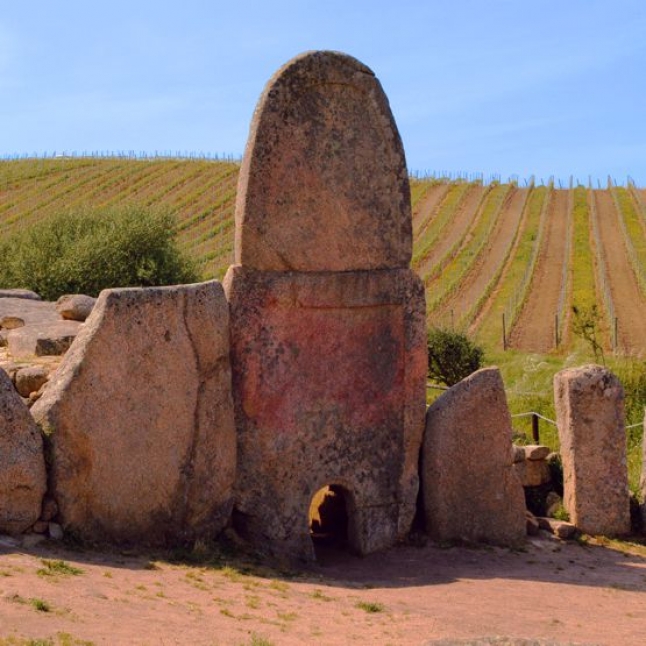
01 November 2015 The tombs of giants
The tombs of giants, extraordinary collective funeral monuments, are spread all over the Sardinia and they represent a kind of sepulchral tomb with a great fascination and mystery. Today they seem in a little disuse, too isolated and naked, probably in decline; but never we can say, like in this case, that the exterior misleads, because these big temples, apparently run down, despite their obvious humble condition, keep incredible energetic features.
Their name arises from the considerable sizes of the stele: the central rock with the small doorway. Today, in Sardinia, it is possible to count about tree hundred of them.
Their building is inclined to symbolize the bull protome, as a tribute to one of the most venerated divinities of the Sardinian nuragic and pre-nuragic people, namely the God Bull. Sacred places without equals, they were the perfect meeting point, where lives came across their ancestors buried there.
The dead laid down into the funeral monument were not merely dead, but favored, destined to go to a better life shortly afterwards, so deserving of respect; they had already jumped up towards the unknown, towards the afterlife that lives could only try to imagine.

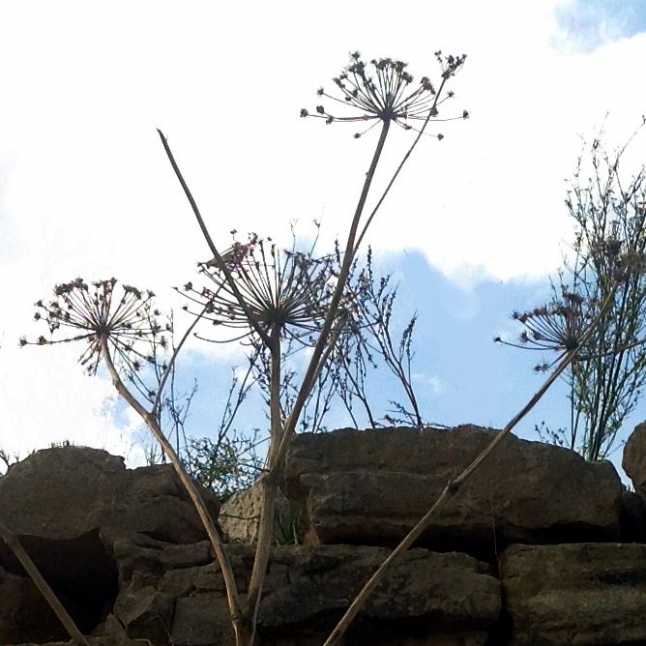
01 November 2015 Pauli Arbarei, a journey for researching giants
In the territory of the small village of Pauli Arbarei, in the historical sub-region of Marmilla, in the open countryside, the modest bare hill surrounding, from their summits, offer a beautiful view. In one of these stands the nuraghe Bruncu Mannu, in one of the highest points of the territory of Pauli Arbarei. It is a nuraghe covered with land that has not benefited, unfortunately, any excavation campaign.
This hill overlooks a large extent of territory. Other ruined and mostly covered with land nuraghes are visible in the adjacent hills, in various strategic points.
About a hundred meters from this nuraghe, three years ago, it began a campaign of excavations where a number of tombs with a rather particular structure were found; it was neither a nuraghe or a tower.
Among the various hypotheses of the archaeologists the most reliable are those that identified the structure with a holy shrine or a prominent tomb. There beside was in fact there are many and as many holes in the ground. All tombs were plundered by grave robbers in search of the grave goods of those buried.
Now, of the excavation, it remains a wire mesh that defines an approximate boundary and piles of stones scattered around.
The weeds and the vegetation seem to have overpowered again what was found.
In the surrounding valley someone claims to have discovered, time ago, something extraordinary. A true graveyard of warriors. Besides the skeletons they were present spears, shields, helmets and coins. Of all this today have remained only the pits that the weather and the elements are slowly covering. Mere rumors or real finds?

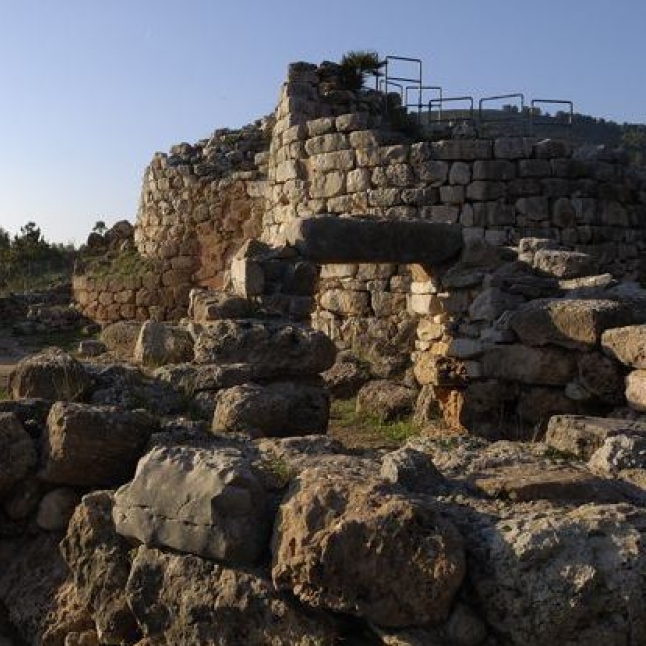
01 November 2015 Sardinia-Atlantis? Sardinia Island of the Blessed?
Among the many anecdotes that tell about the birth of Sardinia Island, there is the one that tells about a large island, Tyrrhenis. A beautiful island, with a lush vegetation, inhabited by people and animals by a beautiful appearance. One day God's wrath awoke suddenly on the island, which was raged by high waves caused by the fury of an earthquake. The waters invaded much of the plains up to the hills. However God felt regret at seeing dispersed such beauty and he held the foot with a small portion of land that had not yet been submerged by the waves. Thus was born Ichnusa (footprint in ancient Greek), by the vestiges of a continent that millennia ago was ravaged by a cataclysm that had engulfed most of its surface.
This story fits easily with the History of Atlantis told by Plato (who lived between 427 and 347 BC.). A beautiful land located outside the Pillars Of Hercules that was swallowed by the sea about nine thousand years before the time when he was speaking, because of the wrath of Zeus, outraged by the behavior despicable and devoid of morality that the inhabitants, first sober, had assumed. The island disappeared swallowed by the deep sea due to a cataclysm.
Plato argued that then existed a large island, very powerful politically and militarily, rich and prosperous. This place was located beyond the Pillars of Hercules and commanded the peoples of North Africa, Libya, and those within and beyond the Pillars of Hercules.
It would certainly be pretentious to equip what is the result of a scientific hypothesis. However, from an assumption, a fanciful tale can arise quite as it may, likewise, have originated a scientific thesis. There are different and opposite fates that may suggest a good idea.
